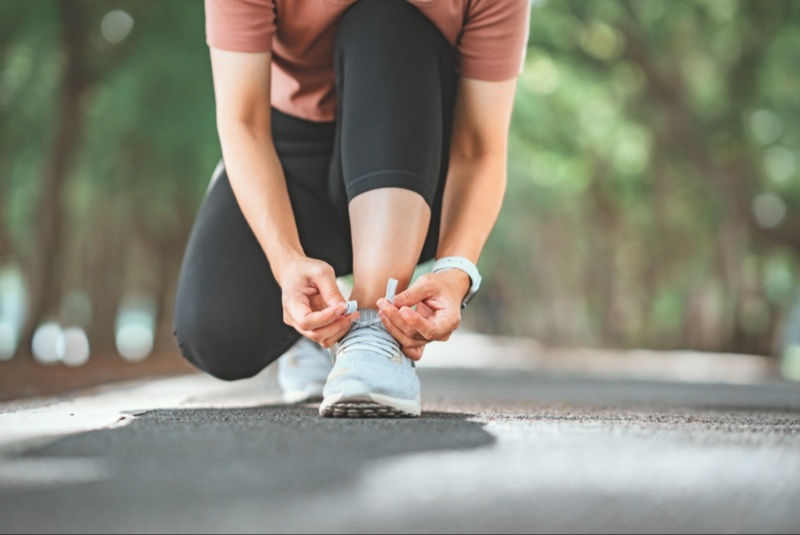Selecting the perfect pair of running shoes is crucial for both novice and seasoned runners. The right shoes can enhance your performance, prevent injuries, and make your running experience more enjoyable. With the vast array of brands, models, and features available, choosing the right pair can seem overwhelming. This comprehensive guide aims to simplify the process by highlighting key factors to consider, such as understanding your foot type, considering where you'll be running, assessing shoe cushioning and support, and the importance of a proper fit. Whether you're hitting the pavement, tackling trails, or training for a marathon, this guide will help you make an informed decision on your next pair of running shoes.
Understanding Your Foot Type and Gait
The foundation of finding the perfect running shoes begins with understanding your foot type and gait. Foot type refers to the shape of your arch—high, medium, or low—which influences how your foot strikes the ground. Gait analysis can identify whether you overpronate (roll inward), underpronate (roll outward), or have a neutral gait. Many specialty running stores offer gait analysis services, which can be invaluable in selecting the right shoes. Shoes are designed to cater to specific gait patterns, offering the support and alignment needed to run comfortably and reduce the risk of injury.
Considering Your Running Terrain
Your running terrain significantly impacts the type of shoes you'll need. Road running shoes are designed for pavement and occasional forays onto packed surfaces with slight irregularities. They're light and flexible, offering cushioning to absorb shock on hard surfaces. Trail running shoes, on the other hand, are suited for off-road routes. They offer enhanced traction, support, and protection against rough terrain. Consider where you plan to run most frequently and choose a shoe designed for that environment to ensure safety and improve performance.
Assessing Cushioning and Support
Cushioning in running shoes helps absorb the impact on your joints and can reduce fatigue, making your runs more comfortable. However, the amount of cushioning needed varies based on personal preference, running style, and distance. Some runners prefer a "barefoot" feel with minimal cushioning to maintain a natural stride, while others benefit from more substantial cushioning for additional support during long runs. Similarly, the level of support needed varies based on your foot type and gait. Ensure the shoes you select provide the right balance of cushioning and support for your specific needs.

The Importance of a Proper Fit
A proper fit is essential for preventing blisters, black toenails, and other common running injuries. When trying on running shoes, consider these tips: try on shoes in the afternoon or evening when your feet are their largest, wear the type of socks you'll run in, and leave a thumb's width of space between your longest toe and the end of the shoe. The shoes should fit snugly around your heel and midfoot, with enough room in the toe box to wiggle your toes. Don't rely solely on shoe size, as sizing can vary between brands and models. Instead, focus on the fit and feel of the shoes.
Durability and Mileage
Consider the durability of the shoes and how many miles you can expect to get out of them. A good pair of running shoes typically lasts between 300 to 500 miles, depending on your running style, weight, and the shoe's construction. Keep track of the mileage on your shoes and inspect them regularly for signs of wear, such as worn-out treads or compressed cushioning. Investing in a durable pair of shoes not only ensures you get your money's worth but also protects you from injuries associated with worn-out footwear.
Staying Informed About New Technologies and Trends
Staying up-to-date with the latest technologies and trends in running shoes is essential for making an informed decision. Footwear technology is continuously evolving, with innovations aimed at improving comfort, efficiency, and injury prevention. Features like advanced cushioning materials, adaptive support systems, and lightweight, breathable fabrics can significantly enhance your running experience. Additionally, trends such as minimalist running shoes or models designed for specific types of running techniques can influence your choice. By keeping informed about the latest developments in running footwear, you can evaluate how new technologies align with your needs and preferences, ensuring you choose a pair of running shoes that incorporates cutting-edge features beneficial to your running style and goals.
Testing and Personal Preference
While research and recommendations are helpful, personal preference plays a significant role in choosing the right running shoes. If possible, test different models by running on a treadmill or a designated area in the store. Pay attention to how the shoes feel on your feet—there should be no pinching, rubbing, or discomfort. The best running shoes are the ones that you forget you're wearing, allowing you to focus on your run. Don't be afraid to take your time and try on multiple pairs to find the perfect match for your feet.
Picking the perfect pair of running shoes involves understanding your needs, from your foot type and gait to the terrain you'll be running on. Remember to consider the cushioning and support each pair offers, ensure a proper fit, and take durability into account. Ultimately, the best way to find your ideal running shoes is to test them yourself, taking into account your personal preference for how they feel during a run. With the right pair of shoes on your feet, you're set to enjoy a more comfortable, efficient, and injury-free running experience.




